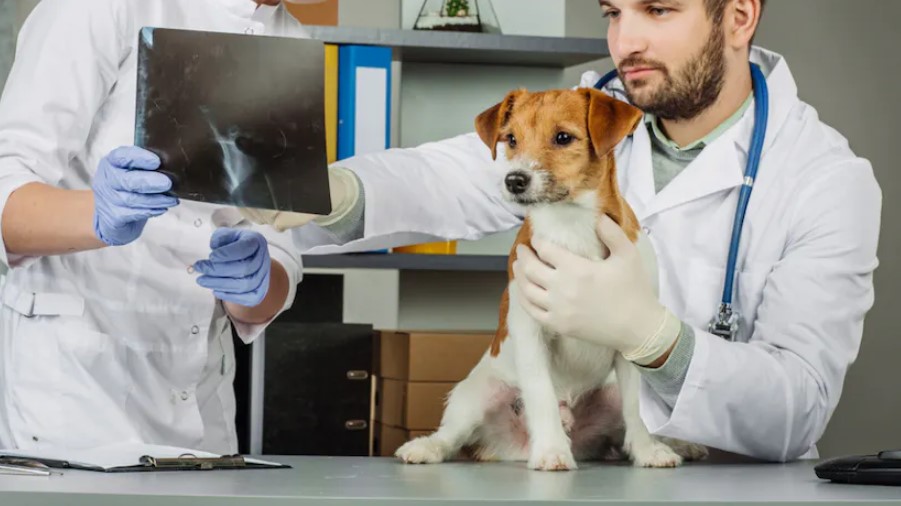None of us wish for our pets to fall ill or get injured, but it’s a reality for which we must prepare emotionally and financially.
While some folks may have a knack for foreseeing the future, the rest of us rely on pet insurance to provide a safety net.
Utilize Pawlicy Advisor to effortlessly compare plans offe
When your pet requires a checkup, your veterinarian might recommend a “closer look.” This may entail diagnostic tests like blood work or stool sample analysis. However, if your pet has suffered an injury, such as a broken bone, your vet may suggest an X-ray (commonly referred to as radiographs in veterinary settings).
The Average Cost of a Dog X-ray The standard cost of a dog’s X-rays typically falls in the range of $150 to $250.
The procedure itself is relatively affordable, minimally invasive, and painless for your pet. However, it necessitates your animal’s stillness for an extended period, a task more challenging with dogs than with humans. Most dogs require some level of sedation to ensure a clear image and proper examination by your vet. The cost may vary based on your dog’s size, with larger dogs requiring more sedatives. Additionally, if your dog is anxious, they may need extra sedation or even general anesthesia.
Benefits of X-rays for Your Dog’s Diagnosis X-ray technology employs electromagnetic waves to produce images of your pet’s internal organs, muscles, blood vessels, and bone structure. It provides a clear view of your dog’s chest, neck, jaw, bones, and other bodily structures.
X-rays are swift and painless, exposing your pet to negligible levels of radiation, equivalent to ten days of everyday environmental exposure, according to the American Cancer Society. The primary advantage of X-rays is precise diagnosis. They can reveal numerous health issues, from broken bones to spinal injuries, ingested foreign objects, bone infections, arthritis, dental decay, and even bone cancer. X-rays are invaluable for detecting heart and respiratory problems, aiding in accurate diagnosis and prognosis.
Limitations of X-rays for Your Dog While X-rays are a valuable diagnostic tool, they are not always the best choice. In some cases, tests of blood, urine, or feces may provide better insight. Additionally, different diagnostic imaging methods, such as ultrasounds, MRIs, or CT scans, may be more appropriate, depending on the ailment. These alternatives generally cost more than X-rays, with ultrasounds averaging between $300 and $600.
Covering X-ray Costs with Pet Insurance X-rays are often part of a comprehensive diagnostic process, which includes expenses beyond the procedure itself. Pet insurance can help cover the costs of X-rays, ultrasounds, and other imaging techniques. The reimbursements for extensive veterinary care often outweigh the expense of pet insurance.
Some pet insurance plans even cover routine wellness exams and other standard veterinary care. In cases where a routine checkup uncovers health issues, insurance with an accident/illness plan and a wellness component can cover checkup costs, diagnostic tests, treatments, and medications.
While finding the right pet insurance at an affordable price can be daunting, Pawlicy Advisor offers a free tool to simplify the process, doing the research for you.



